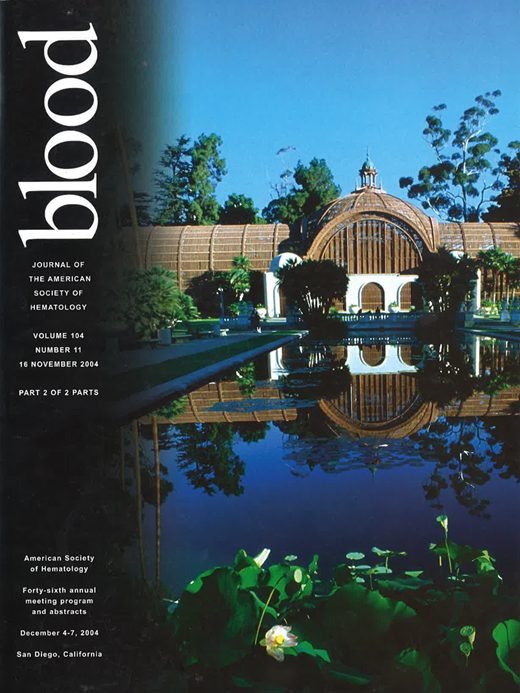Abstract
All new cases of aplastic anemia (AA) seen in the Hematology out patient department (OPD) of All India Institute of Medical Science (AIIMS) from January 2001 to December 2003 were studied till last follow up. Complete response (CR) was defined as - normalization of blood counts; Partial response (PR) as - improvement in blood counts, transfusion independence and not meeting criteria of CR. Database was created in MS Access and SPSS ver 11 was used for statistical analysis. Descriptive statistics were calculated and appropriate tests of significance carried out.
Result- A total of 440 cases of AA were seen during the study period. The total number of new hematology patients seen in the same period was 8605; thus AA comprised 51.13 per thousand (95% CI, 37.9–67.1) new hematology cases. The number of acute leukemias (AML and ALL) diagnosed during this period was 392: the ratio of AA to acute leukemia was 1.1:1. The total number of OPD patients registered in AIIMS for these 3 years was 43,04,849. Thus AA patients comprised 102.23 per million (95% CI, 83.2–123.8) hospital OPD patients. This very high incidence of AA may be due to the tertiary nature of AIIMS. The median age at presentation was 19yr (range 2–84), with males 311 (71%) and females 129 (29%). At presentation the hematological values were: mean hemoglobin (Hb) 5.2 ± 2.03 g/dl; mean total leucocyte count (TLC) 3.1 ± 1.3 x 109/L, mean platelet counts 33.8 ± 19.5 x 109/L. Follow up period was for a median of 3 months (range 0–42). Specific treatment consisted of (a) Androgens - Stanozolol at 2 mg/kg/d (b) Cyclosporine at 3mg/kg/d (c) Antithymocyte globulin at total dose of 75–80mg/kg over 5 to 8 days and (d) combinations of these drugs. The following subgroups were excluded from analysis (i) 14 (3.1%) patients whose records were incomplete and (ii) 38 (8.6%) patients who received only supportive therapy with no response, but whose individual follow up was limited. The overall response to all therapies was 29.7%. The response to different subgroups and statistical significance is given in Table. Jaundice occurred in 23 (5.2%) patients during treatment and HBsAg was positive in two. The course of jaundice was clinically uncomplicated and lasted for 2 to 3 weeks. An interesting finding was a partial or complete response to therapy in 19/23 (82.6%) with CR in 47.8% and PR in 34.8%. The difference in response rate of those who developed jaundice while on therapy and those who did not was statistically significant (P=0.000).
Conclusions: The high incidence of AA in India provides a potential for future studies regarding its etiopathogenesis and therapy. Economic limitations make Stanozolol an important drug in developing countries with its response rates of 19.7%. The unexpected high response in those who developed jaundice during therapy suggests that this could be a marker for recovery.
Response§ to Different Therapies in 388 Patients of Aplastic Anemia
| Treatment group . | Androgen alone . | Cyclosporin alone . | Androgen and Cyclosporin . | ATG + Cyclosporin ±Androgen . |
|---|---|---|---|---|
| Test Chi square test. ©Not statistically significant. ®Statistically significant. §Response compared to overall response to other therapies. | ||||
| Total number (%) | 172 (39.1) | 13 (3) | 179 (40.7) | 24 (6.3) |
| Overall response, % | 19.7 | 8.3 | 31.2 | 62.5 |
| PR, % | 8.6 | 8.3 | 15.9 | 33.3 |
| CR, % | 11.1 | 0 | 15.3 | 29.2 |
| P value | 0.067© | not done | 0.083© | 0.000® |
| Treatment group . | Androgen alone . | Cyclosporin alone . | Androgen and Cyclosporin . | ATG + Cyclosporin ±Androgen . |
|---|---|---|---|---|
| Test Chi square test. ©Not statistically significant. ®Statistically significant. §Response compared to overall response to other therapies. | ||||
| Total number (%) | 172 (39.1) | 13 (3) | 179 (40.7) | 24 (6.3) |
| Overall response, % | 19.7 | 8.3 | 31.2 | 62.5 |
| PR, % | 8.6 | 8.3 | 15.9 | 33.3 |
| CR, % | 11.1 | 0 | 15.3 | 29.2 |
| P value | 0.067© | not done | 0.083© | 0.000® |
Author notes
Corresponding author

